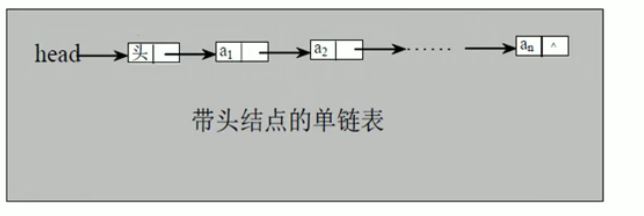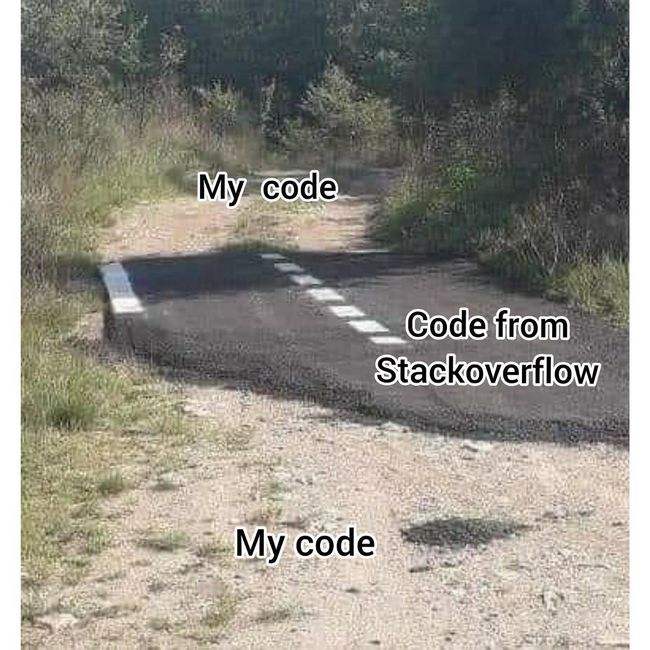前言
b站Java数据结构学习笔记整理。尚硅谷Java数据结构与java算法(Java数据结构与算法)
感觉还是自己写的例子好理解一些。不会附上老师的代码。
1. 链表
链表是以结点的方式来存储
每个节点包含data域,next域(当然,这个节点有自己的内存地址)。
链表的各个节点不一定是连续存储。
链表分带头节点的链表和没有头结点的(头结点就一个指针指向地址,没data)
头结点没有数据
注意,链表的逻辑结构是连续的,但是在实际的内存存储中并不是按地址连续存储的。
2. 单链表
2.1 单链表的创建:
定义一个节点类,这个节点类有成员变量Data,和一个成员变量next,其中next代表的是它所连接的下一个该类的节点。
定义一个链表类,这个链表类有一个初始的头结点,还有一个add添加方法,一个list遍历方法。
代码:
1 2 3 4 5 6 7 8 9 10 11 12 13 14 15 16 17 18 19 20 21 22 23 24 package 单链表;public class HeroNode public int no; public String name; public String nickname; public HeroNode next; public HeroNode (int no, String name, String nickname) this .no = no; this .name = name; this .nickname = nickname; } @Override public String toString () return "HeroNode{" + "no=" + no + ", name='" + name + '\'' + ", nickname='" + nickname + '\'' + '}' ; } }
1 2 3 4 5 6 7 8 9 10 11 12 13 14 15 16 17 18 19 20 package 单链表;import java.util.Stack;public class SingleLinkedList private HeroNode head = new HeroNode(0 , "" , "" ); public HeroNode getHead () return head; } public void add (HeroNode heroNode) } public void list () } }
2.2 单链表的遍历:
如果头结点的next为空,证明该链表为空链表,直接返回
flowchart LR
Head-.-x*
如果头结点next不为空,定义一个current指针,指向头结点的下一个节点,也就是真正有值的第一个节点处。
flowchart LR
Head-->A-->B-->C
1((current))-.->A
当current指针指向的当前节点不为null时,打印这个节点,并右移current指针。
flowchart LR
Head-->A-->B-->C
1((current))-.->A
flowchart LR
Head-->A-->B-->C
1((current))-.->B
flowchart LR
Head-->A-->B-->C--x*
1((current))-.->*
代码:
1 2 3 4 5 6 7 8 9 10 11 12 13 14 15 16 public void list () if (head.next == null ) { System.out.println("链表为空" ); } else { HeroNode current = head.next; while (current != null ) { System.out.println(current); current= current.next; } } }
2.3 单链表的添加:
flowchart LR
Head-->A-->B
C
flowchart LR
1((temp))-.->Head-->A-->B
C
当temp指针指向的不是尾节点时,右移temp指针,直到到达尾节点处
flowchart LR
Head-->A-->B
1((temp))-.->B
C
flowchart LR
Head-->A-->B-->C
1((temp))-.->B
2.4 单链表的按顺序添加
**关键的事实:**比如往列表{1, 2, 3, 4, 6, 7, 8, 9}中添加5,那么只需要从头开始遍历列表,直到找到比5大的位置6,然后把5插到6的前面就行了。就像打扑克一样。
flowchart LR
Head-->1-->2-->3-->4-->6-->7-->8-->9
id[5]
flowchart LR
111((temp))-.->Head
Head-->1-->2-->3-->4-->6-->7-->8-->9
id[5]
当temp指向的节点不是尾节点时,开始循环,希望通过循环找到待插入的位置。
比较temp指向的节点的下一个节点的值是否比5大,如果不比5大,就指针右移;
如果比5大,就退出循环,指针的指向就是我们要找的待插入的位置 。
在循环过程中,如果指针指向的节点的值和待插入的节点的值相同,那就重复了。不插入重复的节点。直接return。
flowchart LR
111((temp))-.->4
Head-->1-->2-->3-->4-->6-->7-->8-->9
id[5]
flowchart LR
111((temp))-.->Head
Head
id[5]
flowchart LR
111((temp))-.->2
Head-->1-->2
id[9]
回到上面那个案例,插入时,将待插入的节点连接temp指针指向的节点的下一个节点,并将temp指针指向的节点连接到插入的节点:
flowchart LR
111((temp))-.->4
Head-->1-->2-->3-->4-->6-->7-->8-->9
5-->6
flowchart LR
111((temp))-.->4
Head-->1-->2-->3-->4
6-->7-->8-->9
4-->5
5-->6
代码(在上文基础上):
1 2 3 4 5 6 7 8 9 10 11 12 13 14 15 16 17 18 19 20 21 22 23 24 25 26 27 public void addByOrder (HeroNode heroNode) HeroNode temp = head; while (temp.next != null ) { if (temp.next.no == heroNode.no) { System.out.println("待插入的英雄的编号" + heroNode.no + "已经存在,不能插入\n" + heroNode.no); return ; } if (temp.next.no > heroNode.no) { break ; } temp = temp.next; } heroNode.next = temp.next; temp.next = heroNode; }
2.5 单链表节点的修改
修改节点信息,根据编号来改,编号本身不能改(类似于学号)。
使用上文中提到的遍历 来实现。如果编号和要修改的节点相同,那就修改,然后return。
代码:
1 2 3 4 5 6 7 8 9 10 11 12 13 14 15 public void update (HeroNode newHeroNode) if (head.next == null ) { System.out.println("链表为空" ); } HeroNode current = head.next; while (current != null ) { if (current.no == newHeroNode.no) { current.name = newHeroNode.name; current.nickname = newHeroNode.nickname; return ; } current = current.next; } System.out.println("未找到该编号下的节点" + newHeroNode.no); }
2.6 单链表节点的删除
找到需要删除的节点的前一个结点temp
temp.next = temp.next.next;被删除的结点不会被引用,会被垃圾回收机制删除
1 2 3 4 5 6 7 8 9 10 11 12 13 14 15 public void delete (int no) HeroNode temp = head; boolean flag = true ; while (temp.next != null ) { if (temp.next.no == no){ flag = false ; temp.next = temp.next.next; break ; } temp = temp.next; } if (flag){ System.out.println("未找到需要删除的元素" ); } }
之前的那个学生管理系统是用ArrayList做的。
3. 单链表新浪面试题-查找倒数第k个
前菜:求单链表中有效节点的个数。
1 2 3 4 5 6 7 8 9 10 11 12 13 14 public int size (HeroNode head) if (head.next == null ) { System.out.println("链表为空" ); return 0 ; }else { int size = 0 ; HeroNode temp = head; while (temp.next!=null ){ temp = temp.next; size++; } return size; } }
链表中的head就代表了整个链表。
新浪面试题: 查找单链表中的倒数第k个节点。
单链表不可能从后往前遍历,所以应该先把整个列表遍历,看看一共有几个节点,倒数第k个就是正数 length-k 个。
定义一个指针temp,然后拖动指针遍历的方法真的很有用!
1 2 3 4 5 6 7 8 9 10 11 12 13 14 15 16 17 18 19 20 21 public HeroNode getNode (HeroNode head, int index) if (head.next == null ) { return null ; } int size = size(head); if (index <= 0 || index > size) { return null ; } int goalPosition = size - index + 1 ; int count = 0 ; HeroNode temp = head; while (temp.next != null ) { count++; temp = temp.next; if (count == goalPosition) { return temp; } } return null ; }
4. 腾讯面试题-单链表的反转
需求: 单链表的反转
解决思路(头插法 ):
现有一个链表:
flowchart LR
Head-->A-->B-->C
定义一个辅助的头结点reverseHead
flowchart LR
Head-->A-->B-->C
reverseHead
从头到尾遍历原来的链表,每遍历一个节点,就将其取出,放在辅助头结点所在的新链表的最前端。
flowchart LR
Head-->B-->C
reverseHead-->A
flowchart LR
Head-->C
reverseHead-->B-->A
flowchart LR
Head
reverseHead-->C-->B-->A
让head节点指向reverseHead链表中的第一个节点,并将reverseHead指向null
flowchart LR
Head-->C
reverseHead--xC-->B-->A
flowchart LR
Head-->C
C-->B-->A
代码实现:
老师的代码,晦涩,难懂(他好像自己都不理解,是背下来的),根本讲不明白……他说这题难,如果是听他讲好像是挺难= = 最后还是没理解他的代码,自己写了一个。
1 2 3 4 5 6 7 8 9 10 11 12 13 14 15 16 17 18 19 public void reverseList (HeroNode head) if (head.next == null || head.next.next == null ) { return ; } HeroNode current = head.next; HeroNode reverseHead = new HeroNode(0 ,"" ,"" ); while (current!=null ){ head.next = current.next; HeroNode jointNode = reverseHead.next; reverseHead.next = current; current.next = jointNode; current = head.next; } head.next = reverseHead.next; reverseHead.next = null ; }
原理就是上面的流程图图解。
6. 百度面试题 - 从尾到头打印单链表
要求:从尾到头打印单链表
方式1:反转单链表,再遍历(会改变链表的结构,不推荐)
方式2:将各个节点压入栈中,利用栈的先进后出 实现逆序打印。
Java中栈的小演示:
1 2 3 4 5 6 7 8 9 10 11 public static void main (String[] args) Stack<String> stack = new Stack<>(); stack.add("1" ); stack.add("2" ); stack.add("3" ); while (stack.size()>0 ){ System.out.println(stack.pop()); } }
使用方式2实现从尾到头打印单链表。
1 2 3 4 5 6 7 8 9 10 11 12 13 14 public void reversePrint (HeroNode head) if (head.next == null ){ return ; } Stack<HeroNode> stack = new Stack<HeroNode>(); HeroNode cur = head.next; while (cur!=null ){ stack.push(cur); cur = cur.next; } while (stack.size()>0 ){ System.out.println(stack.pop()); } }
注意,没有改变链表本身的顺序,只不过是用栈这个机制打印的。
7. 双向链表
就是有一个pre指向前面节点的地址。
双向链表的增删改查:
遍历:和单向的一样,可以向前,也可以向后。
添加:默认添加到双向链表最后,和单项一样。
先找到最后节点
temp.next = newHeroNodenewHeroNode.pre = temp
修改:修改思路和单项链表一样
删除
因为是双向链表,所以可以实现正向或者反向删除某个节点
找到要删除的temp节点
temp.pre.next = temp.nexttemp.next.pre = temp.pre
1 2 3 4 5 6 7 8 9 10 11 12 13 14 15 16 17 18 19 20 21 22 23 24 25 26 27 28 29 30 31 32 33 34 35 36 37 38 39 40 41 42 43 44 45 46 47 48 49 50 51 52 53 54 55 56 57 58 59 60 61 62 63 64 65 66 67 68 69 70 71 72 73 74 75 76 77 78 79 80 package 双链表;public class doubleLinkedList private HeroNode head = new HeroNode(0 , "" , "" ); public HeroNode getHead () return head; } public void add (HeroNode heroNode) HeroNode temp = head; while (temp.next != null ) { temp = temp.next; } temp.next = heroNode; heroNode.pre = temp; } public void list () if (head.next == null ) { System.out.println("链表为空" ); } else { HeroNode temp = head.next; while (temp != null ) { System.out.println(temp); temp = temp.next; } } } public void update (HeroNode newHeroNode) if (head.next == null ) { System.out.println("链表为空" ); } HeroNode temp = head.next; boolean flag = true ; while (temp != null ) { if (temp.no == newHeroNode.no) { temp.name = newHeroNode.name; temp.nickname = newHeroNode.nickname; flag = false ; break ; } temp = temp.next; } if (flag) { System.out.println("未找到该编号下的节点" + newHeroNode.no); } } public void delete (int no) if (head.next == null ){ System.out.println("链表为空,无法删除" ); return ; } HeroNode current = head.next; boolean flag = true ; while (current != null ) { if (current.no == no) { flag = false ; current.pre.next = current.next; if (current.next!=null ){ current.next.pre = current.pre; } break ; } current = current.next; } if (flag) { System.out.println("未找到需要删除的元素" ); } } }
1 2 3 4 5 6 7 8 9 10 11 12 13 14 15 16 17 18 19 20 21 22 23 24 package 双链表;public class test public static void main (String[] args) HeroNode hero1 = new HeroNode(1 ,"宋江" ,"及时雨" ); HeroNode hero2 = new HeroNode(2 ,"卢俊义" ,"玉麒麟" ); HeroNode hero3 = new HeroNode(3 ,"吴用" ,"智多星" ); HeroNode hero4 = new HeroNode(4 ,"林冲" ,"豹子头" ); doubleLinkedList doubleLinkedList = new doubleLinkedList(); doubleLinkedList.add(hero1); doubleLinkedList.add(hero2); doubleLinkedList.add(hero3); doubleLinkedList.add(hero4); HeroNode newHero4= new HeroNode(4 ,"孙健耕" ,"啥也不是" ); doubleLinkedList.update(newHero4); doubleLinkedList.delete(4 ); doubleLinkedList.list(); } }
8. 环形链表-约瑟夫问题
约瑟夫问题:设编号为1,2,…n的人围坐在一圈,约定编号为k的人从1开始报数,报到m的那个人出列,直到所有人都出列。求出列顺序。
解题思路:
定义一个helper指针和一个current指针,分别指向最末端和第一个节点。
flowchart LR
A-->B-->C-->D-->E-->A
1((current))-.->A
2((helper))-.->E
将helper指针和current指针指向当前需要报数(也就是第K个)人处,helper始终在current的后一位(这里假设从第1一个人开始报数,那指针就不用移动了)
flowchart LR
A-->B-->C-->D-->E-->A
1((current))-.->A
2((helper))-.->E
报m个数,比如m=2(注意,current指向的节点会报"1",所以只需要移动一次)
flowchart LR
A-->B-->C-->D-->E-->A
1((current))-.->B
2((helper))-.->A
flowchart LR
A-->B-->C-->D-->E-->A
1((current))-.->C
2((helper))-.->A
将helper指针指向的节点A连接到当前current指针指向的节点C
flowchart LR
B-->C-->D-->E-->A-->C
1((current))-.->C
2((helper))-.->A
flowchart LR
C-->D-->E-->A-->C
1((current))-.->C
2((helper))-.->A
B
完整代码:
1 2 3 4 5 6 7 8 9 10 11 12 13 14 15 16 17 18 19 20 21 22 23 package 单向环型表;public class Boy private int no; private Boy next; public Boy getNext () return next; } public void setNext (Boy next) this .next = next; } public Boy (int no) this .no = no; } public int getNo () return no; } }
1 2 3 4 5 6 7 8 9 10 11 12 13 14 15 16 17 18 19 20 21 22 23 24 25 26 27 28 29 30 31 32 33 34 35 36 37 38 39 40 41 42 43 44 45 46 47 48 49 50 51 52 53 54 55 56 57 58 59 60 61 62 63 64 65 66 67 68 package 单向环型表;public class CircleSingleLinkedList private Boy first = null ; public void addBoy (int nums) if (nums < 1 ) { System.out.println("输入的值有误" ); return ; } Boy curBoy = null ; for (int i = 1 ; i <= nums; i++) { Boy boy = new Boy(i); if (i == 1 ) { first = boy; first.setNext(first); curBoy = first; } else { curBoy.setNext(boy); boy.setNext(first); curBoy = boy; } } } public void showBoy () if (first == null ) { System.out.println("链表为空" ); return ; } Boy curBoy = first; while (true ) { System.out.println("小孩编号" + curBoy.getNo()); if (curBoy.getNext() == first) { break ; } curBoy = curBoy.getNext(); } } public void countBoy (int startNo, int countNum, int nums) if (first == null || startNo < 1 || startNo > nums) { System.out.println("数据不合理" ); return ; } Boy helper = first; while (helper.getNext() != first) { helper = helper.getNext(); } for (int j = 0 ; j < startNo - 1 ; j++) { first = first.getNext(); helper = helper.getNext(); } while (helper != first) { for (int j = 0 ; j < countNum - 1 ; j++) { first = first.getNext(); helper = helper.getNext(); } System.out.println(first.getNo()); first = first.getNext(); helper.setNext(first); } System.out.println(first.getNo()); } }
1 2 3 4 5 6 7 8 9 10 11 12 13 14 package 单向环型表;public class josephu public static void main (String[] args) CircleSingleLinkedList cl = new CircleSingleLinkedList(); cl.addBoy(5 ); cl.showBoy(); cl.countBoy(1 ,2 ,5 ); } }





